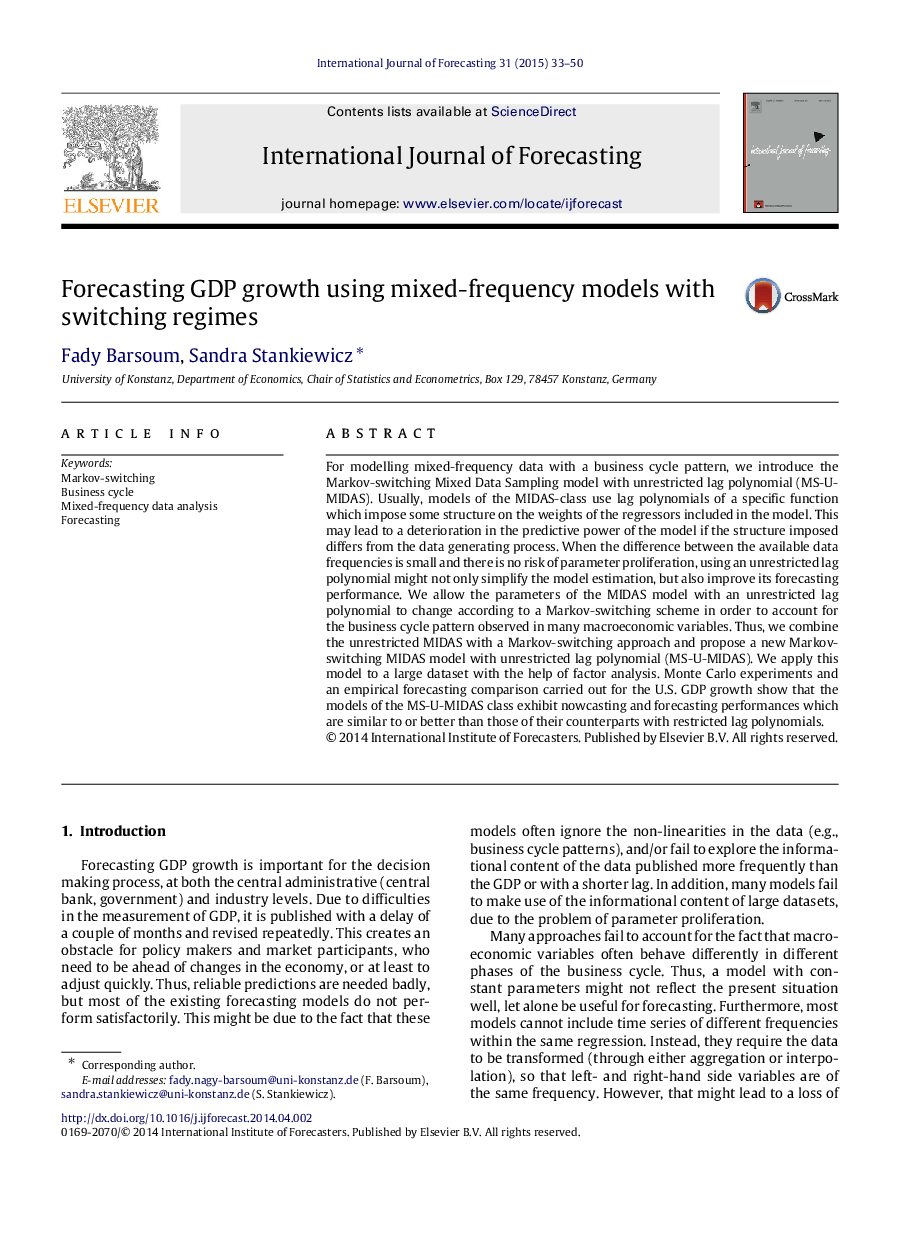| کد مقاله | کد نشریه | سال انتشار | مقاله انگلیسی | نسخه تمام متن |
|---|---|---|---|---|
| 997490 | 1481442 | 2015 | 18 صفحه PDF | دانلود رایگان |
For modelling mixed-frequency data with a business cycle pattern, we introduce the Markov-switching Mixed Data Sampling model with unrestricted lag polynomial (MS-U-MIDAS). Usually, models of the MIDAS-class use lag polynomials of a specific function which impose some structure on the weights of the regressors included in the model. This may lead to a deterioration in the predictive power of the model if the structure imposed differs from the data generating process. When the difference between the available data frequencies is small and there is no risk of parameter proliferation, using an unrestricted lag polynomial might not only simplify the model estimation, but also improve its forecasting performance. We allow the parameters of the MIDAS model with an unrestricted lag polynomial to change according to a Markov-switching scheme in order to account for the business cycle pattern observed in many macroeconomic variables. Thus, we combine the unrestricted MIDAS with a Markov-switching approach and propose a new Markov-switching MIDAS model with unrestricted lag polynomial (MS-U-MIDAS). We apply this model to a large dataset with the help of factor analysis. Monte Carlo experiments and an empirical forecasting comparison carried out for the U.S. GDP growth show that the models of the MS-U-MIDAS class exhibit nowcasting and forecasting performances which are similar to or better than those of their counterparts with restricted lag polynomials.
Journal: International Journal of Forecasting - Volume 31, Issue 1, January–March 2015, Pages 33–50
